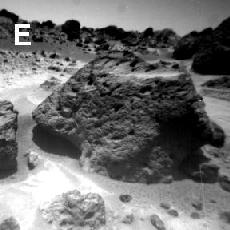This image shows the rock called "Souffle".
Click on image for full size
Image from: NASA/JPL
Martian Weathering by Wind and Sand
Dried debris left after a flood is "wind mobile" and can be lifted into the air by winds. The general process by which this occurs is called "saltation". Saltation is the primary form of abrasion and erosion of the Martian surface. Saltation is carried to an extreme during the frequent Martian global dust storms.
Features found in and near the rocks by the Mars Pathfinder lander provide evidence for both sandblasting and saltation on the Martian surface. The rock shown here, dubbed "Souffle", is surrounded by wind drifts as well as showing evidence of ventifact formation by sand erosion.
The efficacy of particles for abrasion depends upon the particles'
- availability
- size
- trajectory
On Mars the winds accelerate to higher speeds than on Earth so that the sand grains are accelerated to higher speeds as well, and for a greater length of time. (This leads to a different angle of impact of sand grains on rocks and affects the gouging and chipping power of sandblasting winds). Because of Mars' lower gravity, the winds can more easily lift and carry sand particles. But the lower atmospheric pressure of Mars makes it harder for the winds to move sand particles. This makes the erosion of Martian rock a little different than on Earth.
You might also be interested in:
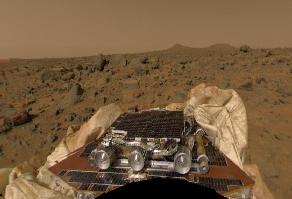
The Mars Pathfinder (MPF) mission was sent to investigate the geology of Mars. Its principal objective was to analyze the rocks and soil of Mars. The MPF consisted of 2 components, a lander and a mobile
...more
This image shows pits and holes (ventifacts) in a small rock found by the Mars Pathfinder Rover. These ventifacts are artifacts of weathering on Mars and were created by wind erosion. The Souffle rock
...more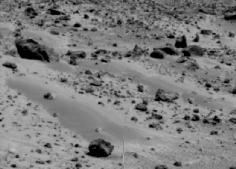
Fluvial environments (water) are the origin of sand grains on Earth, but what of Mars? Sand grains of Mars come from basalt. They seem to be particles which are cemented together, rather than rounded crystalline
...more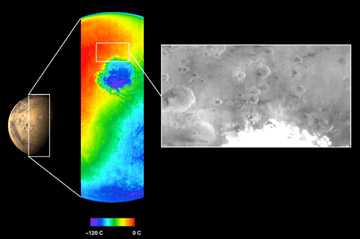
The Mars Odyssey was launched April 7, 2001, from Cape Canaveral Air Force Station in Florida. After a six-month, 285 million-mile journey, the Odyssey arrived at Mars on October 24, 2001 (02:30 Universal
...more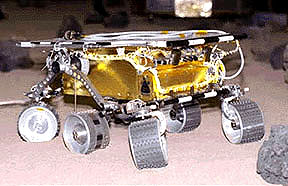
The Mars 2005 mission is still in the planning stages. It is set to launch in the year 2005.
...more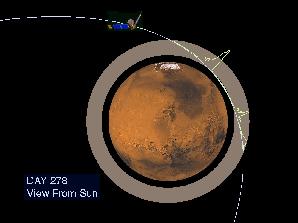
On September 12, 1997, the Mars Global Surveyor successfully entered a highly elliptical orbit around Mars. To get into the near-circular, near-polar, low-altitude orbit necessary to map the surface of
...more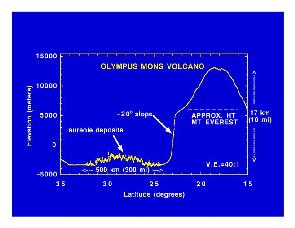
Mars Global Surveyor carries an instrument which measures the altitudes of things. The instrument is called an altimeter, or "altitude-meter". The graph to the left shows the results returned from Mars
...more


